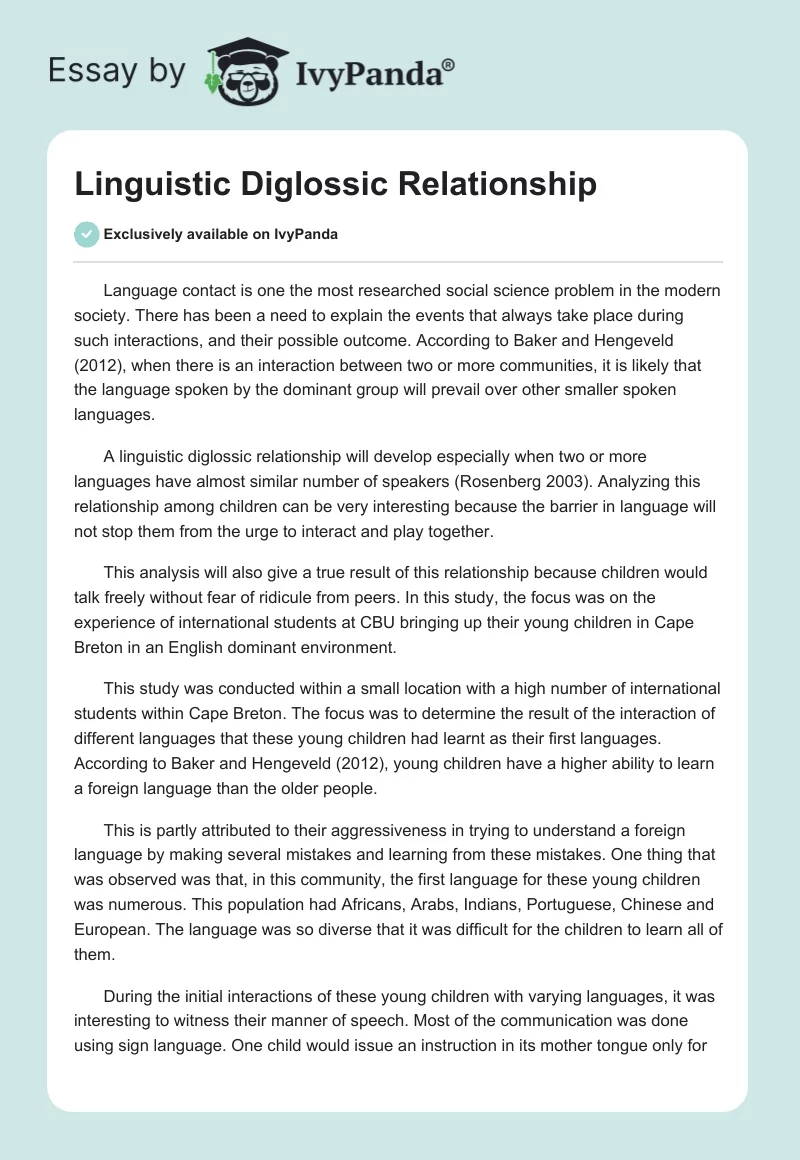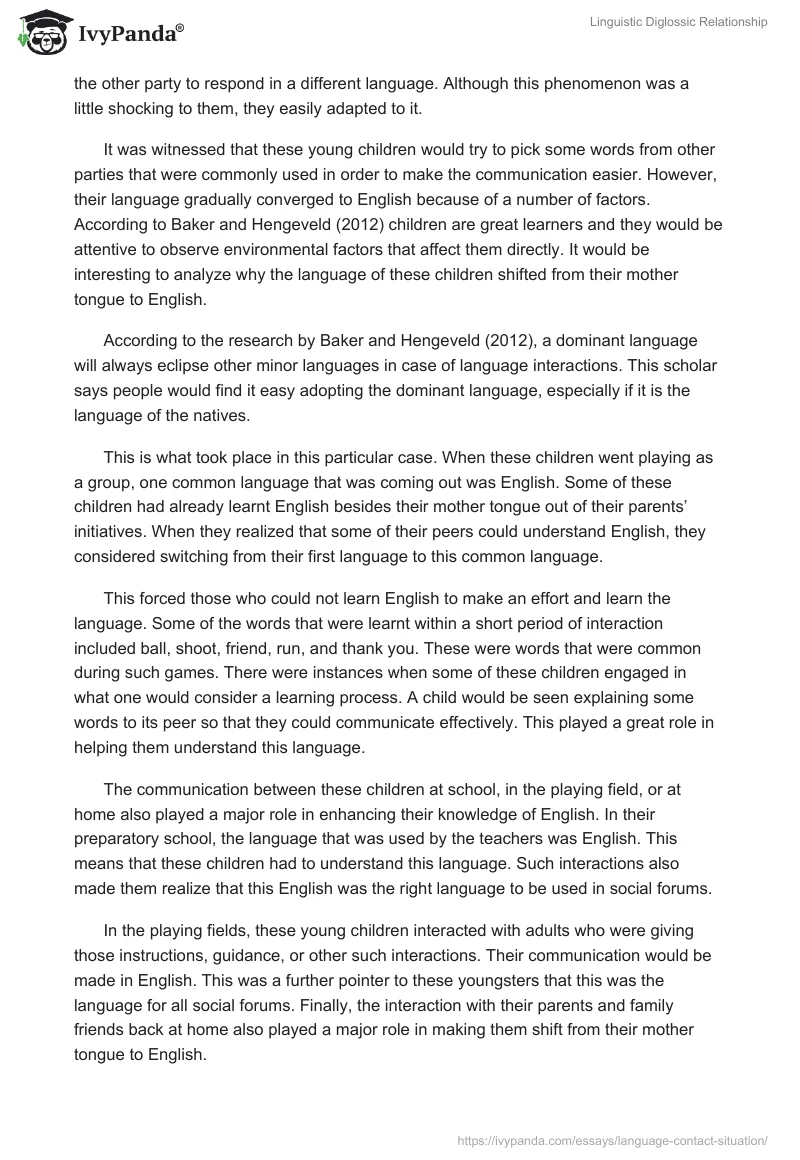Language contact is one the most researched social science problem in the modern society. There has been a need to explain the events that always take place during such interactions, and their possible outcome. According to Baker and Hengeveld (2012), when there is an interaction between two or more communities, it is likely that the language spoken by the dominant group will prevail over other smaller spoken languages.
A linguistic diglossic relationship will develop especially when two or more languages have almost similar number of speakers (Rosenberg 2003). Analyzing this relationship among children can be very interesting because the barrier in language will not stop them from the urge to interact and play together.
This analysis will also give a true result of this relationship because children would talk freely without fear of ridicule from peers. In this study, the focus was on the experience of international students at CBU bringing up their young children in Cape Breton in an English dominant environment.
This study was conducted within a small location with a high number of international students within Cape Breton. The focus was to determine the result of the interaction of different languages that these young children had learnt as their first languages. According to Baker and Hengeveld (2012), young children have a higher ability to learn a foreign language than the older people.
This is partly attributed to their aggressiveness in trying to understand a foreign language by making several mistakes and learning from these mistakes. One thing that was observed was that, in this community, the first language for these young children was numerous. This population had Africans, Arabs, Indians, Portuguese, Chinese and European. The language was so diverse that it was difficult for the children to learn all of them.
During the initial interactions of these young children with varying languages, it was interesting to witness their manner of speech. Most of the communication was done using sign language. One child would issue an instruction in its mother tongue only for the other party to respond in a different language. Although this phenomenon was a little shocking to them, they easily adapted to it.
It was witnessed that these young children would try to pick some words from other parties that were commonly used in order to make the communication easier. However, their language gradually converged to English because of a number of factors. According to Baker and Hengeveld (2012) children are great learners and they would be attentive to observe environmental factors that affect them directly. It would be interesting to analyze why the language of these children shifted from their mother tongue to English.
According to the research by Baker and Hengeveld (2012), a dominant language will always eclipse other minor languages in case of language interactions. This scholar says people would find it easy adopting the dominant language, especially if it is the language of the natives.
This is what took place in this particular case. When these children went playing as a group, one common language that was coming out was English. Some of these children had already learnt English besides their mother tongue out of their parents’ initiatives. When they realized that some of their peers could understand English, they considered switching from their first language to this common language.
This forced those who could not learn English to make an effort and learn the language. Some of the words that were learnt within a short period of interaction included ball, shoot, friend, run, and thank you. These were words that were common during such games. There were instances when some of these children engaged in what one would consider a learning process. A child would be seen explaining some words to its peer so that they could communicate effectively. This played a great role in helping them understand this language.
The communication between these children at school, in the playing field, or at home also played a major role in enhancing their knowledge of English. In their preparatory school, the language that was used by the teachers was English. This means that these children had to understand this language. Such interactions also made them realize that this English was the right language to be used in social forums.
In the playing fields, these young children interacted with adults who were giving those instructions, guidance, or other such interactions. Their communication would be made in English. This was a further pointer to these youngsters that this was the language for all social forums. Finally, the interaction with their parents and family friends back at home also played a major role in making them shift from their mother tongue to English.
For instance, Arab child would be greeted by a Chinese family friend in English. At first, the child will take time to respond based on the guidance of the parents. However, they would slowly come to understand that this is the language they should speak in their everyday life. As Rosenberg (2003) observes, it is common for such children to forget their mother tongue, unless their parents decides to engage them actively in their language as they develop.
References
Baker, A., & Hengeveld, K. (2012). Linguistics: The basics. Malden, MA: John Wiley & Sons.
Rosenberg, M. B. (2003). Nonviolent communication: A language of life. Encinitas, CA: PuddleDancer Press.


